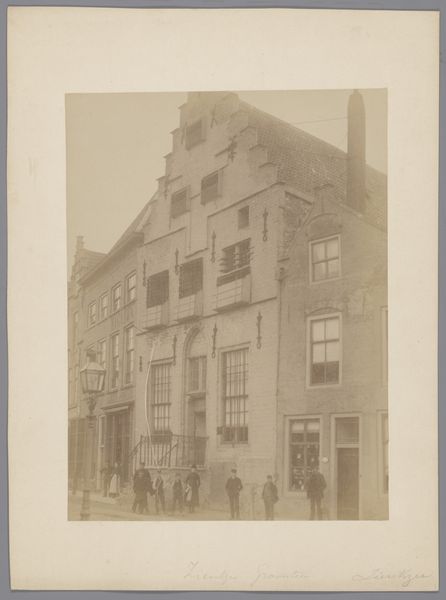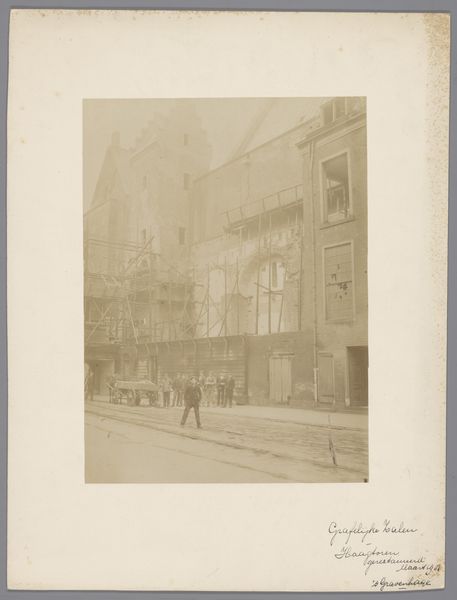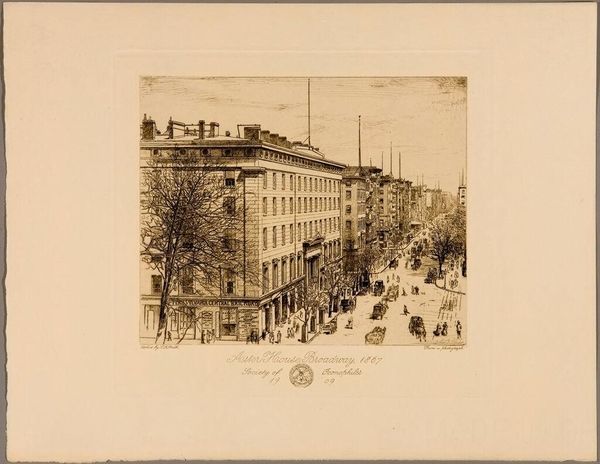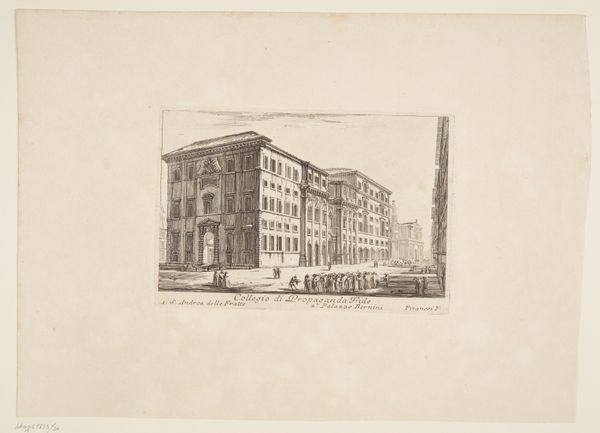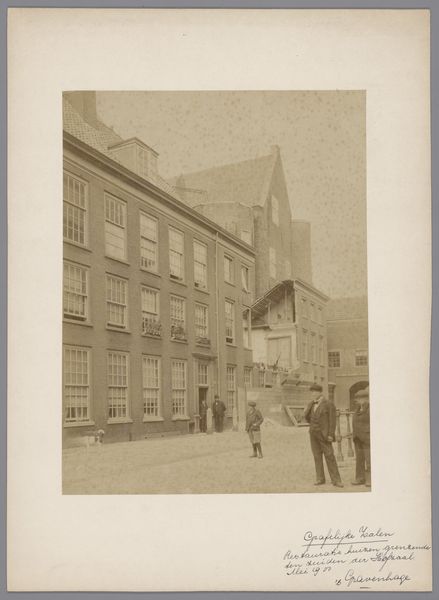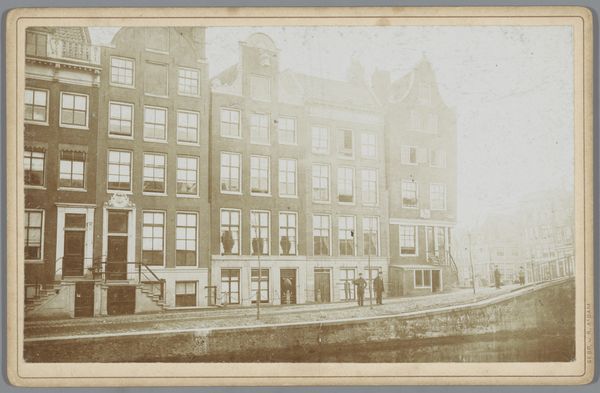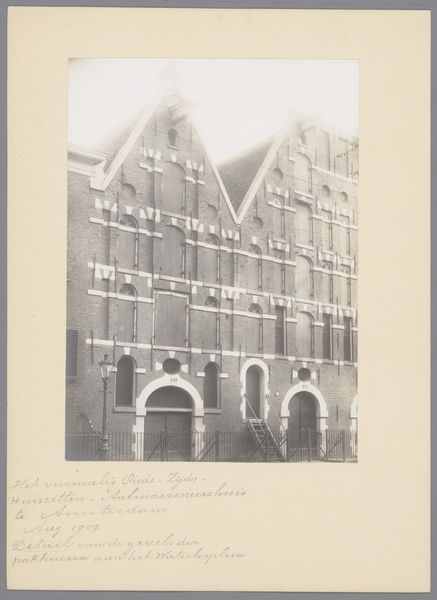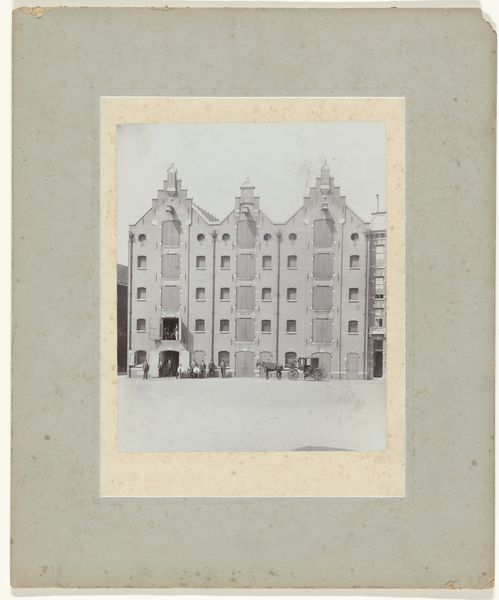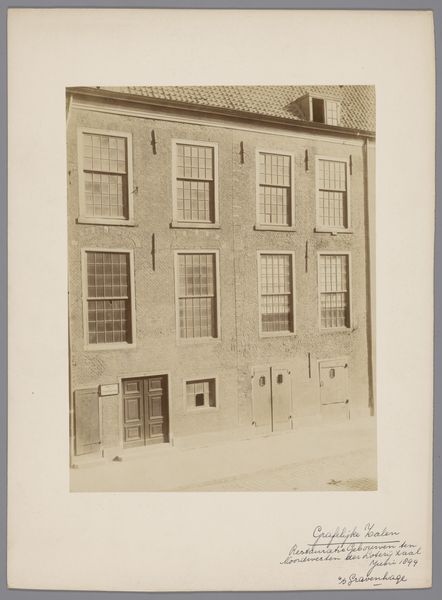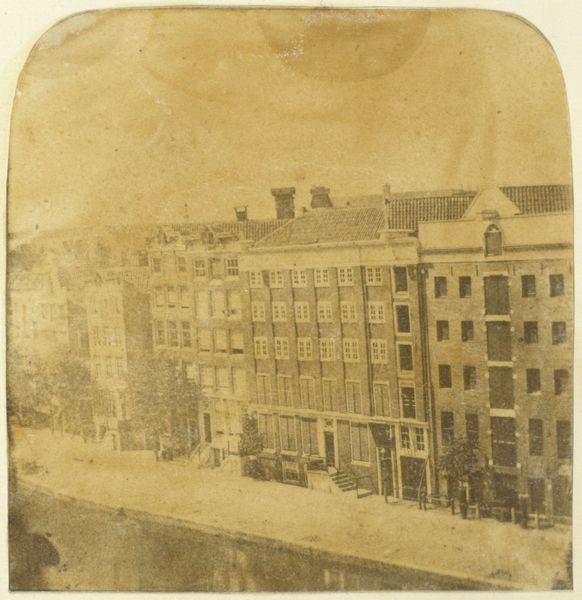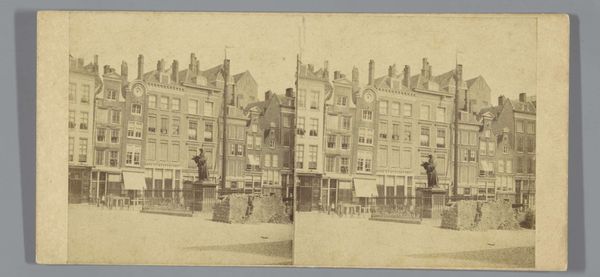
Pakhuizen en arbeiders aan de Houtmankade te Amsterdam 1900 - 1920
0:00
0:00
photography
#
dutch-golden-age
#
photography
#
cityscape
#
realism
Dimensions: height 215 mm, width 165 mm, height 360 mm, width 296 mm
Copyright: Rijks Museum: Open Domain
Curator: This is a photograph titled "Pakhuizen en arbeiders aan de Houtmankade te Amsterdam" which translates to "Warehouses and Workers at the Houtmankade in Amsterdam." We believe it was captured sometime between 1900 and 1920. Editor: My first impression? A palpable sense of work and waiting. It’s a stark image. The sheer mass of the warehouses looming over what appear to be dockworkers creates a compelling juxtaposition of power dynamics. Curator: Exactly. Let's consider the context: Amsterdam at the turn of the century was a bustling port city, a global hub for trade and commerce. These warehouses were the backbone of that economy, storing goods from around the world. This photo isn’t just a snapshot; it's a record of the labor that fueled that growth, which often comes with certain exploitation and disparity. Editor: You're right. And the choice of photography as a medium here feels significant. It attempts a kind of realism, yet the starkness, the gray tones, it almost aestheticizes the harshness of their working conditions. Is it documentary or is it artistic license? That question seems inherent in the photograph. Curator: That's the crux of it, isn’t it? It captures a specific moment in time, the reality of these workers, but it also reinforces existing structures. Look at how the architecture dwarfs the figures, highlighting their expendability within the grand scheme of commerce and this emerging economy that often oppresses women and the poor in society. Editor: There’s a tension here, a visual statement about the weight of the warehouses pressing down upon these ordinary individuals and suggesting how the structure is supported by human labour. The style hints to a bygone era, perhaps alluding to the Dutch Golden age while still pointing at a harsh contrast of the era with what's presented. Curator: Ultimately, this photograph forces us to confront the uncomfortable truths about progress and who truly benefits. It's an artifact that documents Amsterdam’s history as a working class entity and reminds us of labor exploitation throughout the nation. Editor: Absolutely. And looking at the contemporary context, we can analyze how photography is involved in both oppression and resilience; how the captured moments carry within it these traces. Curator: Precisely. Thank you for this engaging exchange, reflecting both artistic expression and deep societal considerations. Editor: And thank you. This discussion allows to acknowledge the interplay between aesthetics and critical commentary through this fascinating photograph.
Comments
No comments
Be the first to comment and join the conversation on the ultimate creative platform.
